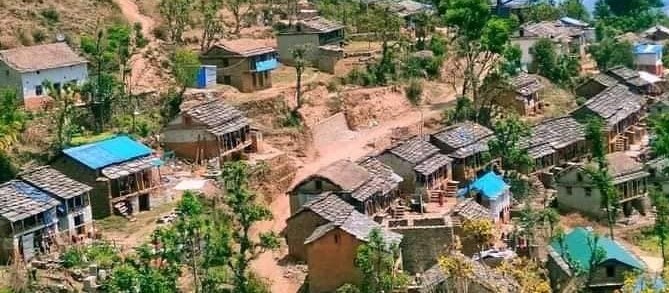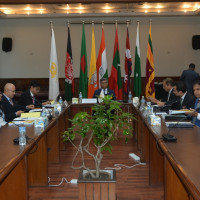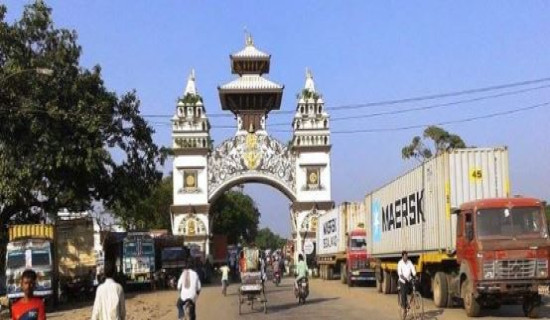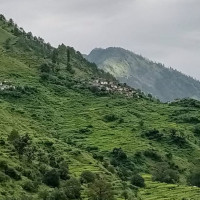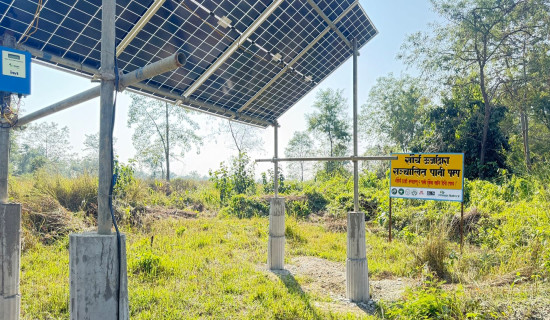- Thursday, 27 November 2025
Development reaches villages, but youth continue to leave for foreign jobs
By Sher Bahadur Sarki,Bajura, Nov. 21: Not long ago, travelling from one ward to another in Bajura would take nearly a full day, while reaching a neighbouring municipality required two to four days. Today, with improved road networks, those journeys have been drastically shortened.
Thanks to better infrastructure, travel times between municipalities have been reduced to mere hours. Villagers can now easily transport their produce, such as vegetables and fruits, to nearby markets.
Similarly, trips to the district headquarters, Martadi, which once required days of walking, now take just a few hours. Significant strides have been made in drinking water, healthcare, education, and transport services across local levels including Himali, Jagannath, Swamikartik, Budhinanda, Gaumul, Tribeni, Budhiganga, and Khaptad Chhededaha.
Roads now connect even the most remote settlements, bringing much-needed development to these areas. Vehicles now operate in villages and settlements that previously lacked access to road networks.
However, this progress has not stemmed the tide of youth migration. Despite improved facilities, most young people continue to leave their homes, seeking employment abroad, particularly in India and the Gulf countries.
As a result, many villages have been left almost deserted, with locked houses becoming a common sight. Despite the availability of health, education, drinking water, and road facilities, foreign countries are viewed as haven, while the village feels like a jail to the youth.
Youth from this area have long migrated to India and the Gulf countries in search of employment, a trend that continues to this day. The pressure to leave for work in India remains significant even now.
Local residents cite lack of irrigation facilities and absence of skill-based and income-generating programmes as key reasons behind the migration of youth.
Roop Sarki, a resident of Budhiganga Municipality-10, shared that he had to leave his home and travel to various parts of India in search of work to support his family, as there were no job opportunities available in the village.
He said, “Even though there is extensive area of land in the village, it is always barren due to the lack of irrigation facilities.”
Similarly, Ram Bahadur Budha from Khaptad Chhededaha Rural Municipality-2 shared his plight: “With no work opportunities in the village, educated youths like me are forced to migrate to India to earn a livelihood.”
Budha said like his father in the past, he had to stay in India and work to cover household expenses and provide education for his children.
Many young people have been forced to leave the village after failing to find work, even after completing their education.
Budha remarked that youth migration is largely due to the local government’s inability to create opportunities for the youth to engage in productive activities within the village.
Even during Dashain, Tihar, and Asar festivals, most villages are filled with young people. However, after the festival season, these villages are left deserted, with the youth having migrated elsewhere.
Despite some initiatives like the Prime Minister’s Self-Employment Programme, which operates across all nine local levels in Bajura, and the chairman’s employment programme launched in 2067 B.S., these efforts have not been sufficient to address the issue.
According to the local government’s self-employment coordinator, Prime Minister’s Self-Employment programme has provided employment to a significant number of unemployed individuals in the village.
Laxman Joshi, employment coordinator of Jagannath Rural Municipality, mentioned that approximately 500 young people aged 18 to 59 find employment in the village each year. However, many more remain without work.
He said, “Previously, only the Prime Minister’s Self-Employment Programme was running here. Since 2067 B.S., the local government has also been operating the Chairman’s Employment Programme to provide employment to unemployed youth in the village.”
Coordinator Joshi stated that although these programmes could not provide employment to all the unemployed individuals in the village, more than 500 people secured employment in the village each year.
According to the National Census 2078, there are 3,446 households in Badimalika, 3,350 in Triveni, 4,277 in Budhiganga, 3,452 in Budhinanda, 1,650 in Gaumul, 1,722 in Himali, 1,684 in Jagannath, 2,223 in Swamikartik, and 3,174 in Khaptad Chhededaha.
Development may have reached the villages, but for many young people, foreign lands continue to offer the only hope for a better future.

